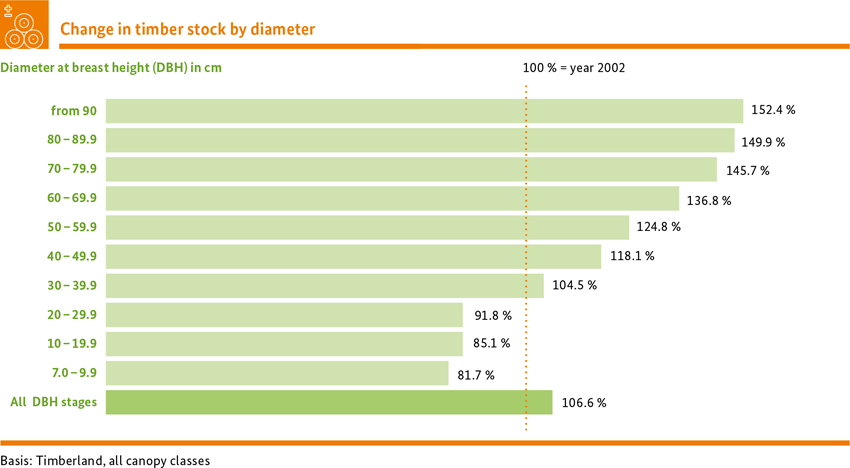However, the fact is that for the forestry holdings, a rise in the age of trees increases risks during harvesting (e.g. caused by crown deadwood), the risks of timber devaluation due to fungi and insects as well as the probability of species protection-related restrictions. A development leading to many of these large-girth trees remaining in the forest until they decompose can, on the one hand, promote the biological diversity of the forests, but on the other hand it reduces quantities of available raw wood and the potential of binding the greenhouse gas carbon dioxide for the long term in timber products.
A forestry policy aligned to the principle of utilization and conservation must weigh the balance between the services and demands of the forest in a constant dialogue with forest owners, nature conservationists, the timber industry and society. Findings from research and development supply important foundations for this.



